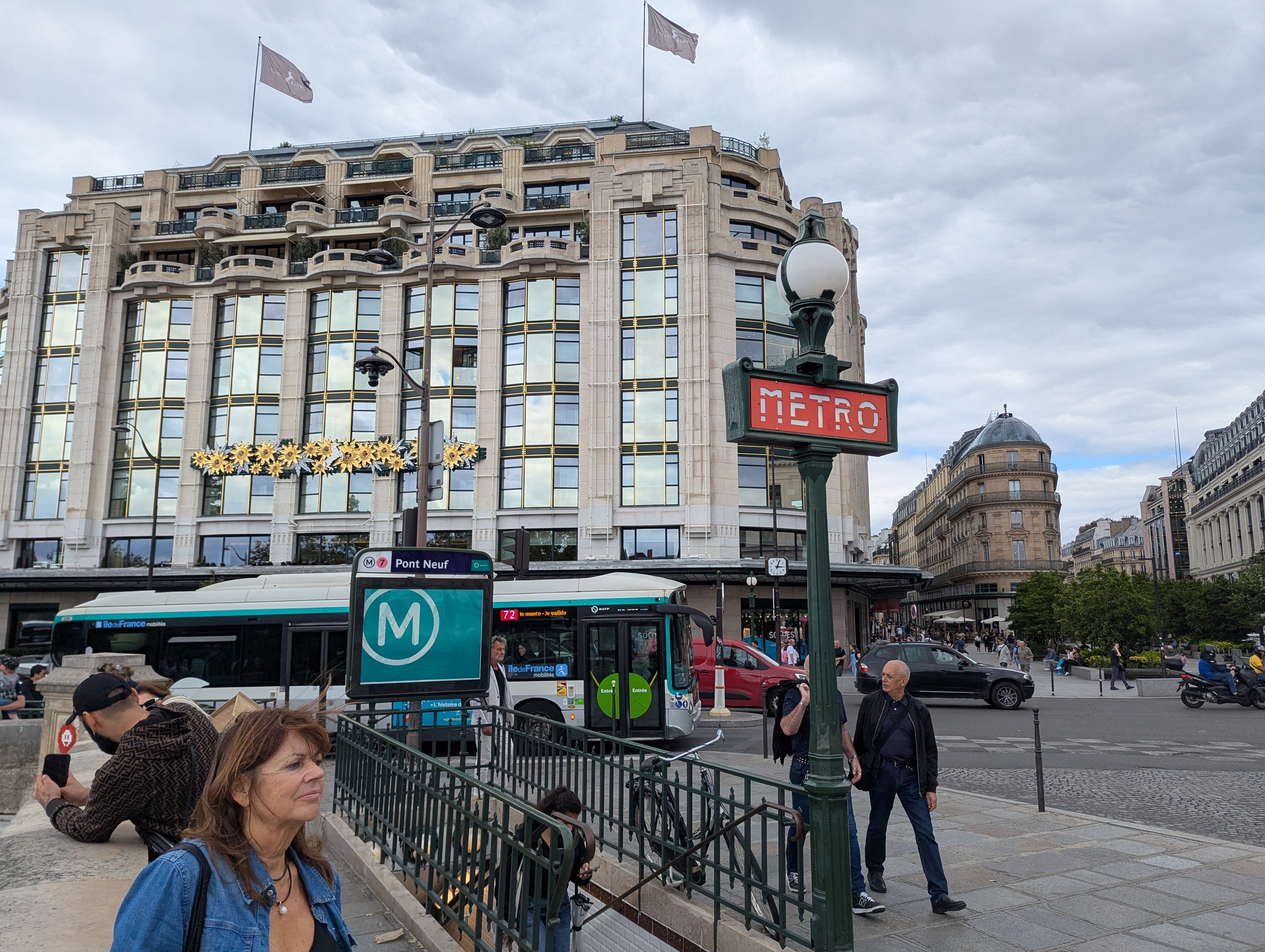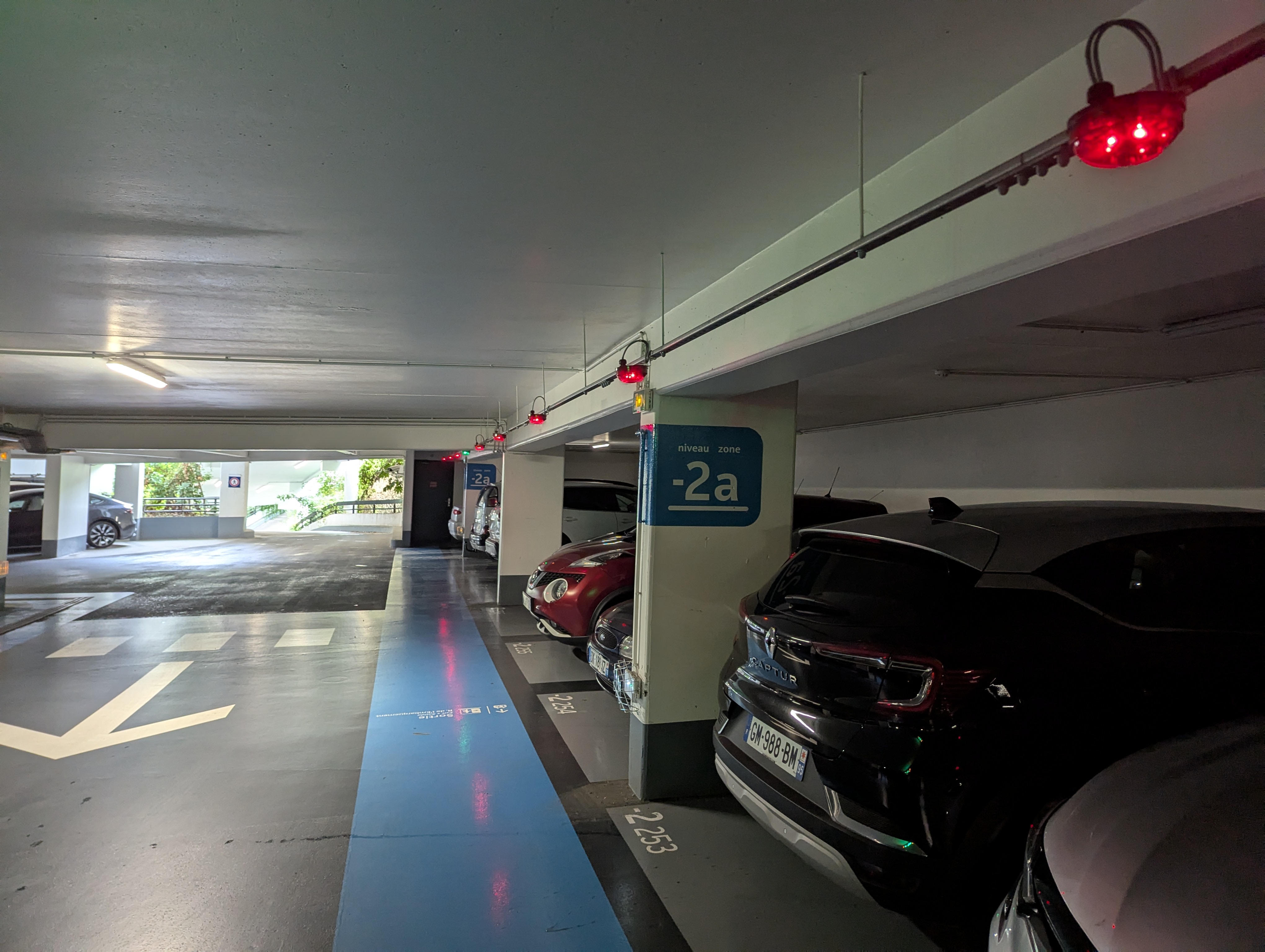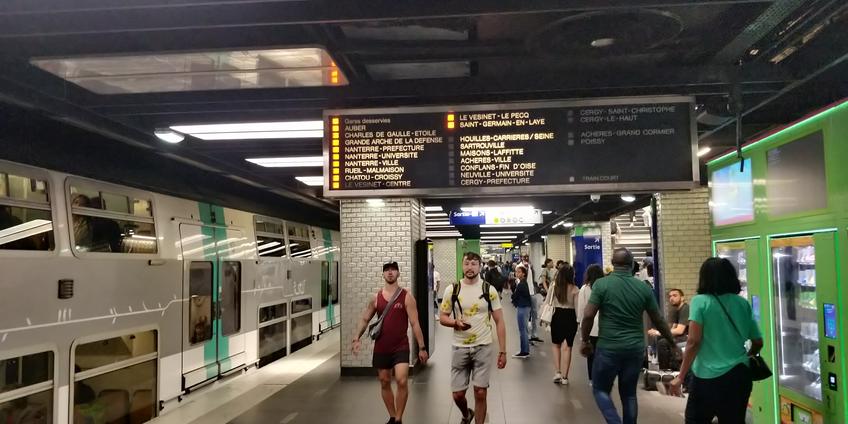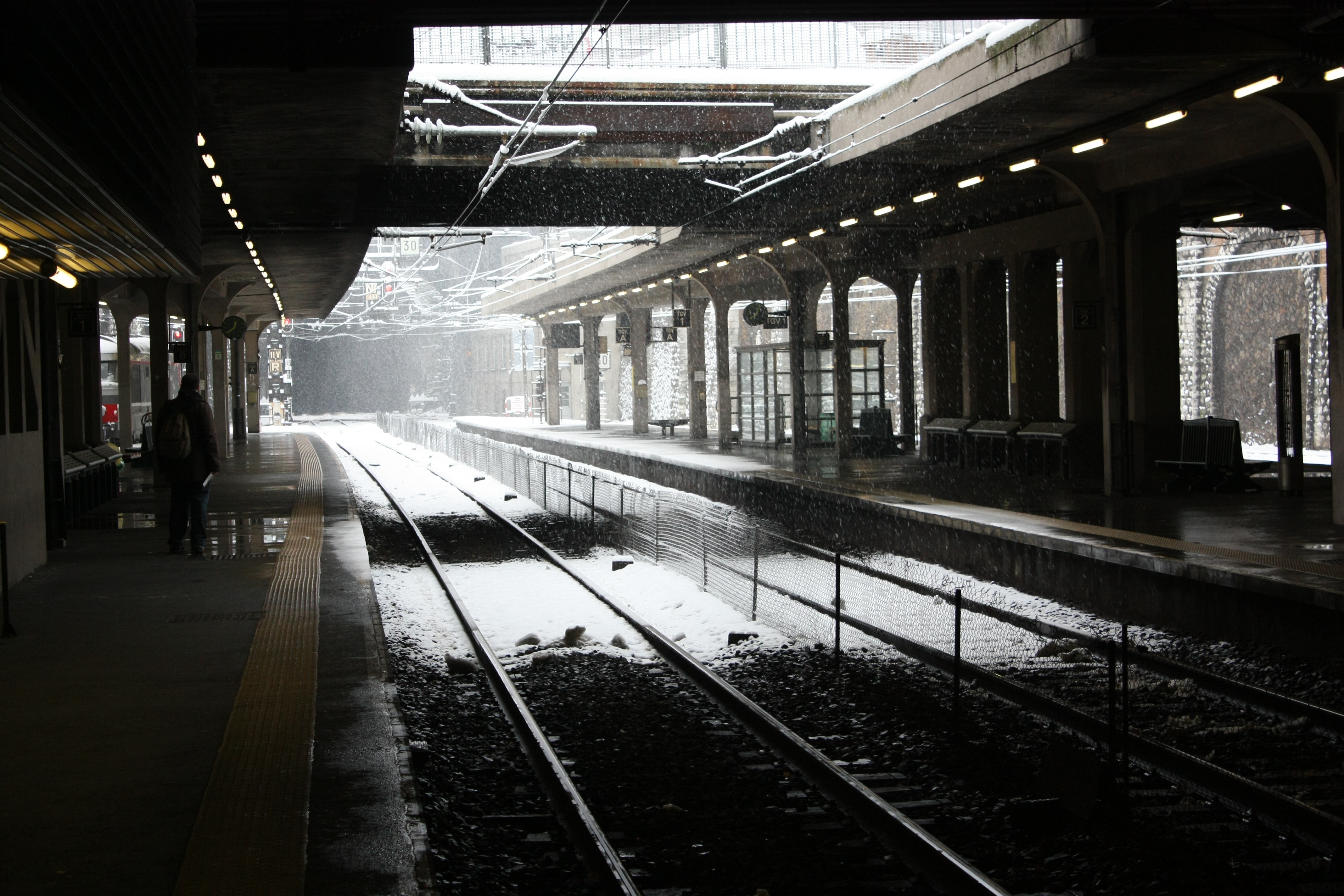Spurred by another superficial review of Paris’ push for bicycle lanes1, I decided to write out why I think so many of these takes are overly superficial, and thus fail to provide useful lessons when applied to other cities.
First, by way of background, I feel like I have rather unique vantage point of being trained in Transportation Planning (in Civil Engineering), paired with having lived and studied in all three of France, Canada, and the United States. On one hand, my schooling was in Utah, one of the few places in the US where they are still building urban freeways2; on the other, I spent three years in France (including 8 months in metro Paris) relying almost exclusively on public transit. In a word, I’ve lived and commuted in both.
The Misconceptions of Paris
The biggest misconception in the accounts I’ve read is that the Paris you visit as a tourist is not the real Paris. Most tourists understand this at some level, but Paris is large enough that this somehow gets lost. While I’ve yet to read a take of someone visiting the Strip in Las Vegas and then declaring that everywhere should build a monorail3 to solve their public transportation problems, people do that all the time with Paris!
Paris, the city proper, is but the core of a much larger metropolitian region4. Population-wise, Paris proper has a population of 2 million among the region’s 12 million. Landbase wise, Paris is ~10 km (~6 miles) in diameter, while regional population bases easily extend ~50 km (~30 miles) out from the City center5. Paris is also a major administration and commercial center, so combined with the number of commuters, means that very few people you stop on the street in Paris are actually from Paris proper.
Paris, in its structure as a city is also fundamentally different from American cities. Where many American cities have suffered from years of “White Flight” that hollowed out their centres and sent those with means feeling to the far suburbs, Paris’ demographics are almost the opposite! The locals told me that Paris proper is almost whole inhabited by les cadres (literally, “the frames”; the term refers to the managerial class), while the working class, immigrants, and the poor are pushed further and further out from the core of Paris.6
Finally, some hold up Paris (and European cities generally) as this model of a city built around (blessed) walking handed down from the Middle Ages, bravely holding out against the (evils of the) modern automobile. In word, Paris is no such thing! The Paris we meet today was the product of an almost wholesale rebuilding by Haussmann, ca. 1860. The explicit goal was to provide wide boulevards7 leading across the City and to remove particularly narrow streets to keep the residents from creating effective barricades. (France has a history of revolutions and revolts starting in Paris.) In many ways, this is not unlike the “freeway conversions” many American cities survived a century later.
The Paris I Know
The first time I “met” Paris and its public transit system, I was 19 and had just flown into Paris. It was my first time in Europe, and my French was poor. I was met by a collogue at the airport, and then taken to the center of Paris via train (via the RER8 B), and managed to catch a glimpse of the Eiffel Tower from the train window! The next day I moved to another French city (Rouen, as it happened): I took the trains from where we were staying in Versailles to central Paris, the métro across Paris to St-Lazare (one of Paris’ six inter-city train stations), and then took the train to Rouen.
Every couple months I would change cities9, usually via Paris. These changes in Paris typically involved coming in to one of the inter-city stations, taking the métro across town, and then leaving from a second inter-city station.
All of these provincial cities has a decent bus system, Rouen and Rennes even had single line métros of their own, and I rarely had access to a car.
After about a year, I was moved to Paris. At first I lived in Nanterre just outside La Denfence, to the northwest of Paris proper. Every day I was in Paris, and rode the métro extensively. When asked for an address, Parisians would typically give you the name of the nearest métro stop. The métro was everywhere; you could get off at a random station, walk around for a couple of hours in any direction that was your fancy, and find yourself only a few minutes walk to the nearest métro stop. City buses were a common sight, but I don’t think I rode them inside Paris more than maybe once; the métro went everywhere I wanted to go, and was easier to figure out. There was a number of bus lines I could take to get from our apartment to the La Defence station, but I never looked at the schedule because the bus was never more than 5 minutes away. From La Defence, I would typically ride the RER A or the Métro Line 1 into Paris proper, and catch another métro connection to our final destination.
After a couple months, I moved to a new apartment south of Paris proper in a suburb called Anthony, which would be my home for over six months. The area I frequented started at the south Paris city border and went south to Massey, and extended from Issy-sur-Siene (in the west) to Choisey-le-Roi (in the east, also on the banks of the Seine). The métro extended a little beyond the edges of Paris, but mostly I rode the commuter trains (the RER, lines B and C, connecting through central Paris at St-Michel, or sometimes via the Métro Line 6 via Denfert-Rochereau) and the city buses. Throughout my time in Paris, I never had a car, but there was nowhere that we couldn’t get to. This is also the era before internet-based shopping took off, so all our shopping was done with a backpack on the bus.
Several years later, I came back to France to live a year in Dieppe, in Normandy. Again, we took the métro to move between the airport and the Paris train stations to catch the train to Dieppe. When my parents came to visit, I offered to drive them anywhere in France, except Paris! (Traffic is nuts in Paris.)
In summary, my time in Paris was not one of vacation: it was months long, and I travelled to many destinations far beyond the tourist sites, both in Paris proper and in the suburbs.
The (Often) Ignored
Comparing my experience to what is often relayed in vacationers’ reports, there is also a collection of facets of Paris life, while not typical being miscontrued, are (often) ignored as transportation planners try and recreate “Paris” at home. To wit:
- The “Paris” that catches people’s attention for it’s transportation moves is the city proper, and only the core of the region. While the headline “Paris is removing private vehicles from its streets” or “Paris is turning over its streets to bicycles” is nominally true, it remains true only because it is taking about “Paris”, as in the City, and not the surrounding region. While better public transportation is now coming to the suburbs, no one is seriously taking about pedestrianizing the streets of Melun or Torcy or Issy or St-Denis.
-
Paris has great weather; not too cold, rarely excessively hot10, snow but not much11, not excessive rain, and few storms. Combined, this means that the Paris public transit system can rely on being exposed to the outside, and needs to provide only limited allowances for the weather. This allows the system to be “fuzzy” in its interfaces with the street, and rarely demands doors, let alone double doors, at the entrances. It allows for (quasi-)open air stations, without the need for climate-controlled waiting areas.
This is technically the Rouen train station, but it show how “open air” many of the stations are in France.
-
Paris gets tons of tourists, over 20 million foreign tourists a year, and as many domestic (French) tourists as well12, which, in a word, is extreme. Catering to tourists makes extra demands on how legible a system much be to first time user (improvements that are typically beneficial to regular users as well) but also provides an extra stream of well-heeled users without a commuting pattern keeping the system busy throughout the day. It also demands that tourist destinations be well serviced13. But the public transit system is also pushed by the locals (to their politicians) as a way to manage the hordes14 without sending the city into gridlock.
- Paris started with a great system. Often I see attempts to mirror Paris’ moves to limit (or remove) auto traffic or to encourage biking to replace private automobile use in places that have astonishingly poor base public transit by comparision. In Paris, street level buses, bicycles, and private automobiles are all alternatives to the Métro, which offers high freqency coverage through the City, and could replace all three of those previous modes.
- Freeways still exist in the Paris region. While not as glitzy or massive as the freeways in LA, Dallas, or Toronto, freeways (les Autoroutes) crisscross the region and remain an important transportation link both within the region and to beyond. While the pedestrianization of les quais de la Seine (the expressway that ran along the banks of the Seine transversing Paris) has removed freeways from the heart of Paris, the limits of Paris proper remain defined in popular conscience by a freeway: La Périphérique, the circular ring road.
- “Downtown” isn’t in Paris. For Europeans cities, it is not uncommon for “downtown”, or the historic heart of the city, to be different from the biggest congregation of office towers, the “Central Business District” (or CBD). For Paris, the CBD is La Defence, built on the northwest corner of the City proper starting in the 1960’s. Building on the previous point, if you look at a map, La Denfence has the air of being build over a giant freeway interchange, and indeed is well connected to the region’s freeways.
- The population of Paris isn’t growing, in fact, it’s lower now that it was a century and a half ago15. The métro system footprint has changed little over that period too. But most cities, at least with the money to spend on public transit or active transportation, are growing, and so need their system to grow over time as well.
The Real Lessons
With all that preamble, yes, there are real and applicable lessons that can be taken from Paris, and places where Paris can be held up as a model.
- Yes, transit can work, and Paris is proof of this. Arguable, at scale, transit is the only thing that works; by way of example, the RER A carries between 40 and 60 thousand people an hour between Les Halles and Opera in rush hour.
- Yes, “actives modes” (i.e. walking and biking) can be a significant part of your overall transportation mix. Paris is a early leader in on-street bike rentals, and you can walk to just about anywhere in Paris. But they are supported by public transit for longer trips.
- Underground rail infrastructure pay dividends for a very long time, well beyond most planning windows. Many of the routes the Métro follows today were established a century ago. And at the density of Paris, ground space is too precious to be devoted to rails.
- Grade separation is essential for capacity. The heavier used Métro lines are all buried16, and level crossings only works as the capacity needed drops away. Grade separation is also essentail to allow the conversion to automated train operation.
-
(Limited) setbacks are overlooked in the move towards densification. I remember returning home to Canada and being surprised by the setbacks even on downtown office towers. Paris hides its density by eschewing highrise towers in favour of medium heights (~6 stories) developed everywhere with very high lot coverage ratios.

An example from central Paris. This is at the end of Pont Neuf, looking at the old Samaritaine department store.
-
Regional planning is needed. Paris, the center, works because you can take transit in from suburbs and tourist attractions both near and far. E.g. If you had to pick up a car at the airport to drive to your City hotel, cars with associated parking would be everywhere, even in the City core. Furthermore, the system in Paris (and region) works for me — as a resident and as a tourist — because it is presented as a unified and integrated system; under the hood, it is a mix of regional trains (the Transilien network), the commuter rail system (the RER), the Métro, and the bus system, each operated and owned by different groups. (As a personal side, I wish they would add the bike rentals to the transit passes.)
- Eventually, you need to connect the suburbs directly. This is a lesson that Paris itself is only taking seriously now. Going in to the center of Paris17 to go between suburbs in slow and gets old in a hurry, but also takes up capacity at the center, where it is often most needed and hardest to upgrade. But this is not where you start, and is equal measures about relieving congestion through the center of the transit system and reducing the number of destinations that you have to take a car to when living in the suburbs.
- Low headway fundamentally changes a system. If you know the bus comes every 5 minutes18 or the métro comes every 3, you stop worrying about the timetable, and just walk to your stop when you’re ready to go. A commuter train that comes every 15 minutes has almost the same feel. At this point, the transit system starts working for you, rather than you building your life around a transit schedule. One of the perceived major advantages of owning your own car is being able to go where you want, when you want. With small enough headways, public transit matches this benefit and removes the hassle and time needed for parking at your destination.
- Universal, tight coverage makes carless possible. Within Paris proper, I don’t worry about transit coverage, and so I never wanted to drive there. But the suburbs become touch-and-go without consistent Métro (and RER) coverage, and so I have to plan my trips there differently. Note that Paris also maintains this universal coverage thoughout the night as well, by running night buses when the métro lines shut down each night.
-
Interface between modes is critical. Each piece of the system has been built and interconnected to be used from as a whole, and to allow connection to the world around it. For example, both the airports — Orly and Charles De Gaulle — are well connected to the system, RER stations in Paris are universally well connected to the Métro system (usually by underground passageways), the intercity train stations are hubs of the Parisian system, and affordable (car) parking is provided at many of the RER stations. I ran into people who would commute from Rouen or Reins each day to Paris, possible only due to this. I have run into many systems elsewhere to give little affordance for using the public transit system if you are not already starting within its catchment area.

This is a parking garage at the end of the RER A line. This summer, we drove from Dieppe to here, and then rode the train into Paris to visit for the day.
Conclusion
Paris is a delightful city that I enjoy visiting again and again, and the public transit system is always one of my highlights. While I have high hopes that the lessons of the Parisian (and French) public transit system will be applied more broadly, I feel that to be successful, the less flashy base systems must be in place. Hopefully this will help you bring out the best in your local system.
And, as always, I would be delighted to help make the above happen!
P.S. The Dutch and Biking
The Dutch are often held us as another model for moving heavily from passenger automobiles to bicycles. While I have not lived in Holland, but I expect a similar list can (and should) be written about how their local lessons can be (mis-)applied to North America as well. If anyone wants to send me on a long term “research trip”, I would be happy to oblige!
-
This one from ISL, a local transportation engineering firm, but it’s only the most recent. This one at least was upfront about noting that these are the experiences of tourists. ↩
-
see the Bangerter Highway ↩
-
the Las Vegas Monorail, incidentally using refurbished hardware from Walt Disney World. ↩
-
called the Île-de-France ↩
-
Mantes-la-Jolie, to the west, is 52km out (measured from the Louvre, i.e. the center of Paris); Versailles, to the south and west, is 19 km out (and not the edge of the developed area); Melun, to the south, is 47 km; EuroDisney, to the east, is 37 km; Charles De Gaulle airport, to the north, is 35 km. ↩
-
indeed, the nearest translate in French for “the projects” (i.e. of American cities) is les banlieu, or literally, “the suburbs”. ↩
-
the most famous is probably the Avenue des Champs-Élysées. ↩
-
Reseau Express Regional; the Paris commuter trains, built starting in the 1960’s. ↩
-
Rouen (in Normandy), then Reims (in Champaign), then Chôlet (in Vendée), then Rennes (in Brittany). ↩
-
I was there one summer for a exceptional heatwave, that ultimately ended up killing 15,000 people! Afterwards, as the old had been particularly affected, ads for nursing homes would prominently note that they were (now?) climatisé, aka air conditioned. Really, this speaks to how uncommon AC was up to that point. ↩
-
I think I saw snow three times the winter I spent in Paris, and it was always in the “slushy” stage; never cold or hard enough to emit a “crunch” sound. ↩
-
Wikipedia’s Tourism in Paris article is the source for this, but the magnitude of the numbers is more important that their actual values, which change year to year. ↩
-
By way of example, EuroDisney and the RER A extension to it were built in coordinated manor, in part to encourage development in the east of the Paris region, which had hitherto been relatively undeveloped. EuroDisney thus provides an anchor for the RER line. ↩
-
One personal example from my last trip to France was we visited Étretat on the Normandy coast. On a previous visit, we had parked in a lot on the cliffs above the town to the east, near Chapelle Notre-Dame de la Garde and the monument to L’Oiseau Blanc, which had now closed. Asking around, it was now expected to park on the other side of town and hike across town and up the cliffs; I guess the locals got tired of the traffic. One guide my friend read actually suggested renting bikes in the next town over and cycling over to avoid the parking issues in Étretat. ↩
-
per Wikipedia, the 1881 population of Paris proper was 2,269,023 and the 2017 population (the most recent provided) was 2,187,526. The generally assumed reason is smaller family size and that homeowners are keeping less household servants, but their former living areas are too small to legally or reasonably rent. When I lived in Paris, they were in the process of passing a law to try and bring more of these spaces to market, by reducing the minimum required size of a rental “apartment” from 10 m2 (107 sq ft) to 8 m2 (86 sq ft)!
That said, the population of the region continues to grow (with the 2017 regional population given as 12.6 million), and the public transportation system continues to grow in the suburbs. ↩
-
The most prominent exception of this would be the Line 6, e.g. near the Eiffel Tower. But even that isn’t run at grade (street level) but is raised. ↩
-
I often changed between RER lines at St-Michel, which is within sight of Notre Dame, or at Châtelet—Les Halles, which is just as central. ↩
-
like when I lived in Nanterre, just beyond La Defence. It was glorious. ↩


Comments
There are no comments yet. Will you add the first one?